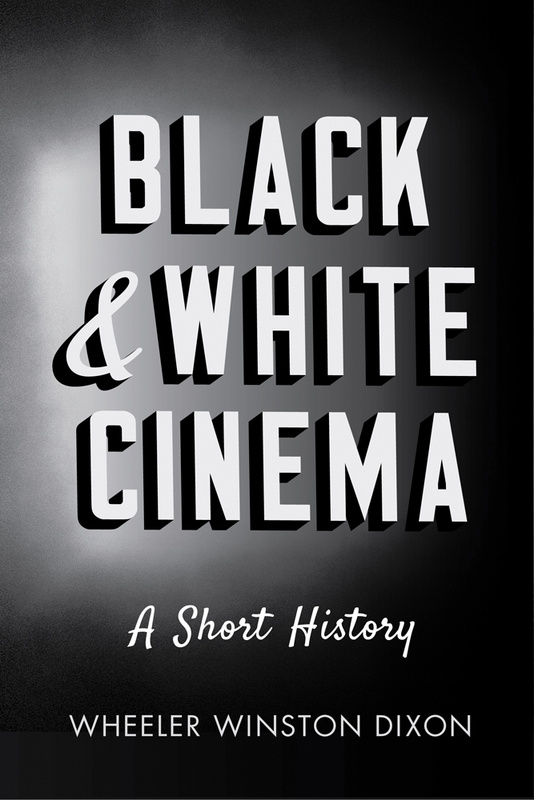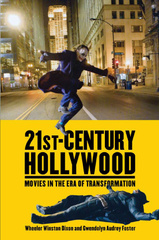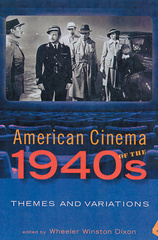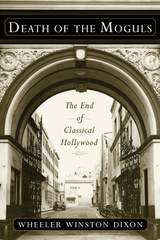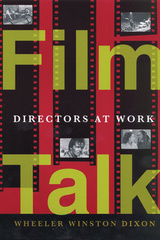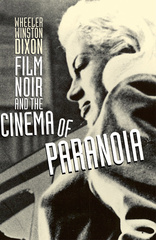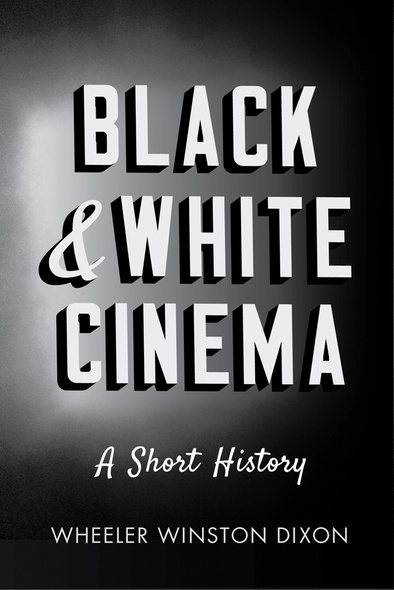
240 pages, 6 x 9
41 photographs
Paperback
Release Date:06 Nov 2015
ISBN:9780813572413
Hardcover
Release Date:06 Nov 2015
ISBN:9780813572420
From the glossy monochrome of the classic Hollywood romance, to the gritty greyscale of the gangster picture, to film noir’s moody interplay of light and shadow, black-and-white cinematography has been used to create a remarkably wide array of tones. Yet today, with black-and-white film stock nearly impossible to find, these cinematographic techniques are virtually extinct, and filmgoers’ appreciation of them is similarly waning.
Black and White Cinema is the first study to consider the use of black-and-white as an art form in its own right, providing a comprehensive and global overview of the era when it flourished, from the 1900s to the 1960s. Acclaimed film scholar Wheeler Winston Dixon introduces us to the masters of this art, discussing the signature styles and technical innovations of award-winning cinematographers like James Wong Howe, Gregg Toland, Freddie Francis, and Sven Nykvist. Giving us a unique glimpse behind the scenes, Dixon also reveals the creative teams—from lighting technicians to matte painters—whose work profoundly shaped the look of black-and-white cinema.
More than just a study of film history, this book is a rallying cry, meant to inspire a love for the artistry of black-and-white film, so that we might work to preserve this important part of our cinematic heritage. Lavishly illustrated with more than forty on-the-set stills, Black and White Cinema provides a vivid and illuminating look at a creatively vital era.
Black and White Cinema is the first study to consider the use of black-and-white as an art form in its own right, providing a comprehensive and global overview of the era when it flourished, from the 1900s to the 1960s. Acclaimed film scholar Wheeler Winston Dixon introduces us to the masters of this art, discussing the signature styles and technical innovations of award-winning cinematographers like James Wong Howe, Gregg Toland, Freddie Francis, and Sven Nykvist. Giving us a unique glimpse behind the scenes, Dixon also reveals the creative teams—from lighting technicians to matte painters—whose work profoundly shaped the look of black-and-white cinema.
More than just a study of film history, this book is a rallying cry, meant to inspire a love for the artistry of black-and-white film, so that we might work to preserve this important part of our cinematic heritage. Lavishly illustrated with more than forty on-the-set stills, Black and White Cinema provides a vivid and illuminating look at a creatively vital era.
Dixon has an encyclopedic knowledge of film history, and a subtle and well-honed aesthetic sense. He rescues important films from oblivion, and finds fresh angles of approach to films that are already familiar.
Covering a hitherto neglected subject, this should be essential reading to all those with an interest in cinema history.
Dixon assumes a splendidly against-the-grain posture in his history of black-and-white cinematography, illuminating a long list of shining moments – and spotlighting a fair share of dull ones – that threaten to fade from view as color becomes ubiquitous and mimetic innovations like IMAX, motion capture, and augmented reality gather ever more momentum in theaters and homes around the world.
Dixon, no stranger to film history, gives us a complete overview of the black and white movie era, from the 1900s through the 1960s ... This book will help to inspire others to think about the artistry so that this classic era of cinema is never forgotten.
Dixon covers the entire history of black and white movies in one volume, and talks about the films and cinematographers who created these films, and often got little credit for their work. Fascinating and compelling, this is essential reading for anyone who loves movies.
Wheeler Winston Dixon’s colorful study of black-and-white cinema reaffirms yet again his unfailing expertise as a critic, historian, and dazzlingly fine writer. Indispensable for students, scholars, and movie buffs alike.
Dixon has created a book that is original and important … Highly recommended.
Highly recommended for really passionate fans of old movies, people who are familiar with names like Gregg Toland, Nicholas Musuraca and John Alton. For the rest of us, this is a really interesting look at black and white films.
[Dixon's] short – but packed to bursting – history expertly details notable films and those who created them.
WHEELER WINSTON DIXON is the James Ryan Professor of Film Studies, the coordinator of the film studies program, and a professor of English at the University of Nebraska, Lincoln. He is a filmmaker and the author or editor of numerous works, including Death of the Moguls: The End of Classical Hollywood; the best-selling A Short History of Film now in its second edition, coauthored with Gwendolyn Audrey Foster (both by Rutgers University Press); and Cinema at the Margins; Streaming: Movies, Media, and Instant Access.
List of Illustrations
Acknowledgments
Prologue
1 Origins
2 The 1930s: Escapism and Reality
3 The 1940s: A Black and White World
4 The 1950s: The Age of Anxiety
5 The 1960s: Endgame
Works Cited
Index
Acknowledgments
Prologue
1 Origins
2 The 1930s: Escapism and Reality
3 The 1940s: A Black and White World
4 The 1950s: The Age of Anxiety
5 The 1960s: Endgame
Works Cited
Index

